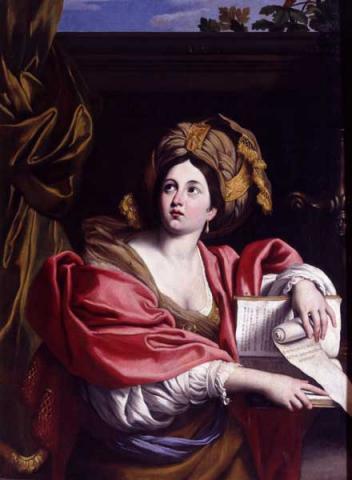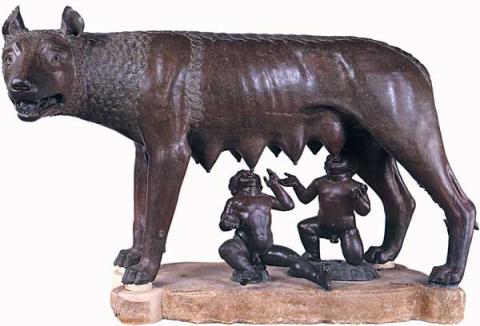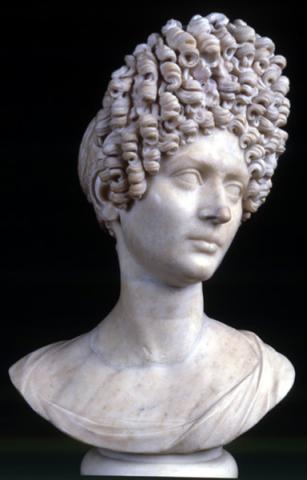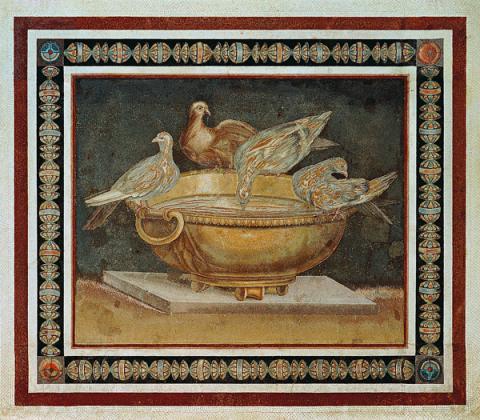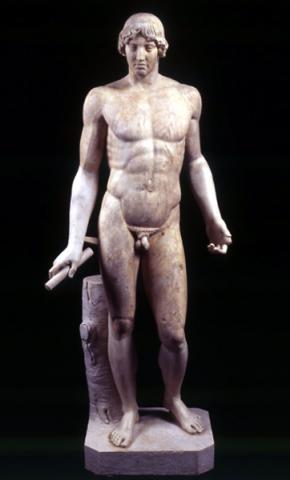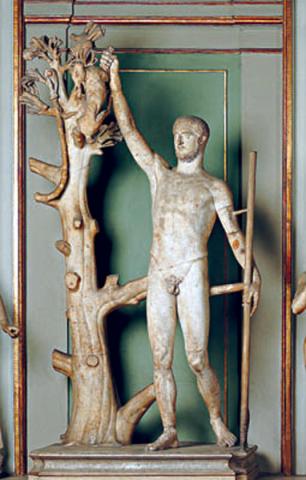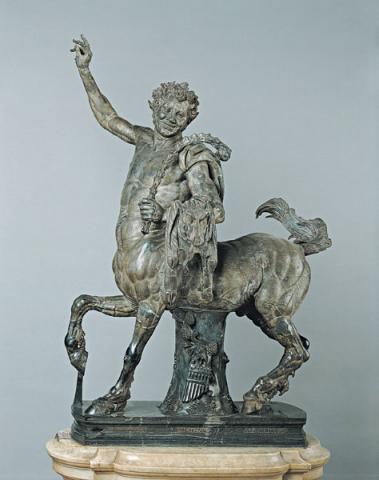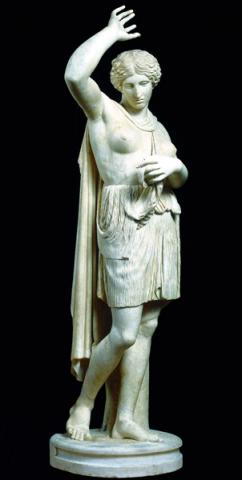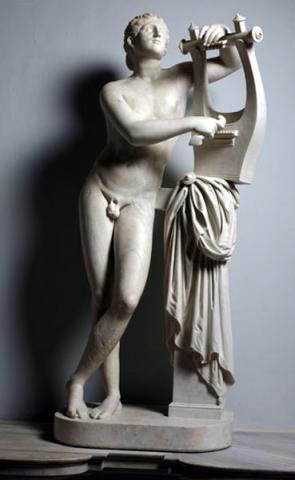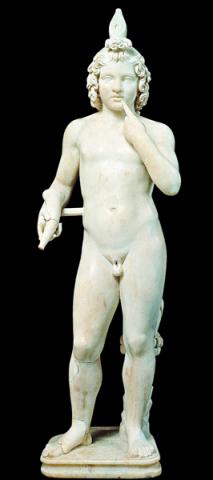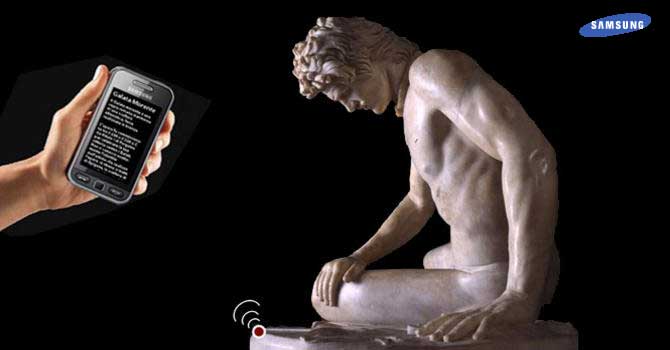Great Hall
The great central hall has preserved its original wall decorations and its XVI century gilded wood coffered ceiling.
In the centre we can see a row of statues in coloured marble, including two centaurs from Hadrian's Villa, both are the work of Greek sculptors.
Other important sculptures, statues of emperors and reproductions of Greek masterpieces are also arranged along the wall.
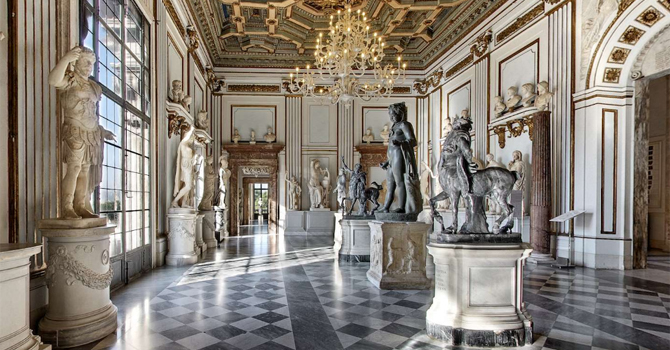
The “great central hall,” as it was called in the Eighteenth century, is, for its size and monumentality, the most representative area of the Museum. Of particular interest is the rich coffered ceiling, at the centre of which stands the coat of arms of Innocent X Pamphili (1644-1655), who supervised the completion of the Palazzo, and the great arched portal, decorated with winged Victories, designed by Filippo Barigioni in first half of the Eighteenth century.
At the centre of the hall are placed, with great visual impact, five black marble masterpieces: at the ends of the room there are two statues, smaller than life-size, which represent Zeus and Asclepius. These precious sculptures, part of Cardinal Albani’s collection, were discovered in 1711 in the excavations of an imperial villa at Anzio, which was frequented by Nero and Hadrian.
Another colossal basanite statue depicts the Baby Hercules, with his iconographic attributes (the apples of the Hesperides and the lion’s skin); it was found on the Aventine and purchased by the Conservators in 1570.
At the sides of the room are two grey-black marble sculptures of centaurs, found together at Hadrian’s Villa in Tivoli. These two outstanding sculptures, works of superb technical virtuosity, bear the signatures of Aristeas and Papias of Aphrodisias in Caria (modern Turkey). One is a mature, bearded centaur, with a pained expression, and the other is a young smiling centaur with his arm raised, representing an allegory of love in the different stages of life.
On the walls are placed valuable works depicting gods, mythological characters, and portrait statues.
Worthy of notice are:
- the beautiful Wounded Amazon, a copy after a statue by Polykleitos (fifth century BC) for the temple of Ephesus, signed by the copyist Sosikles;
- the monumental statue of a Hunter, a portrait of a man of the third century AD, adapted from an early-classical prototype of Perseus;
- the imposing portrait statue of Hadrian (117-138 AD) as Mars, with helmet and shield;
- the imperial couple Marcus Aurelius and Faustina Minor, as Mars and Venus.
The busts of emperors and private citizens are placed on the shelves.
Aristeas e Papias
Sosikles


























